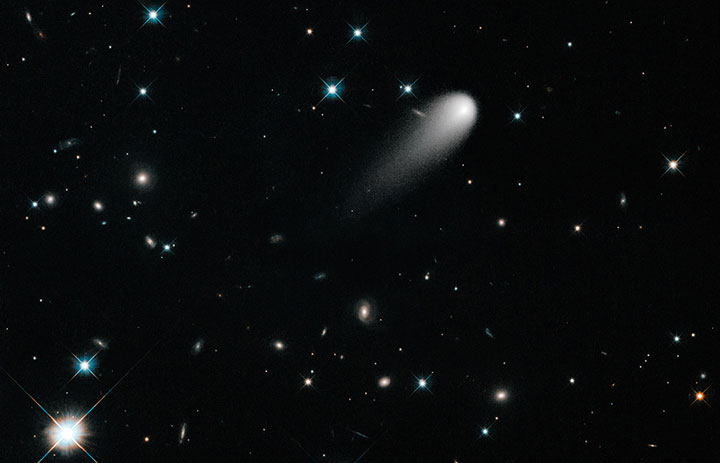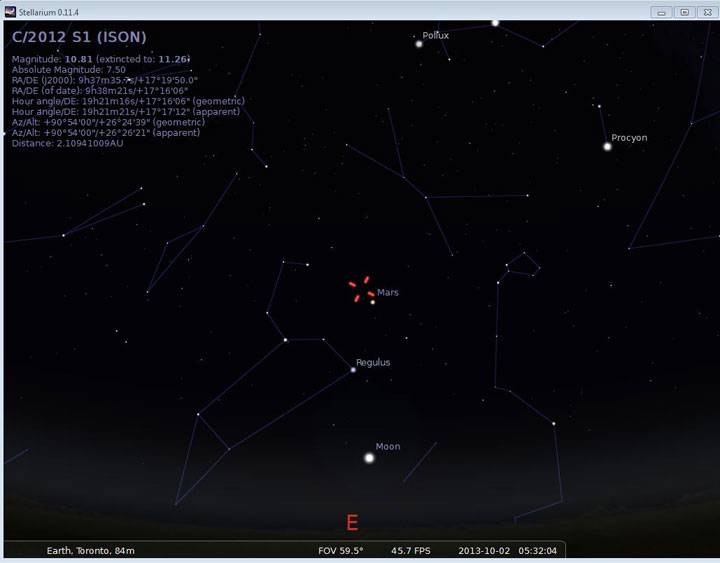TORONTO – Though it is still unknown whether or not Comet ISON will be the “comet of the century,” the icy body is making a close pass of Mars on Oct. 1.

Comet ISON will pass 0.07 astronomical units (AU) from Mars (roughly 10.5 million km). An astronomical unit is the distance from the sun to Earth and is used to measure distances within our solar system.
Although the U.S. government shutdown has affected NASA, the Mars rovers and satellites are still operating. Curiosity and the Mars Reconnaissance Orbiter will attempt to image the comet.
ISON, a “sun-grazing” comet will pass 1.16 million km from the sun’s surface on Nov. 28. If it manages to stay intact and not burn up on its close approach, it could become one of the brightest comets we’ve seen in a long time.
Comet ISON was discovered by Russian astronomers Vitali Nevski and Artyom Novichonok on Sept. 21, 2012 (its official name is C/2012 S1; ISON stands for the International Scientific Optical Network, named for a group of observatories which track objects in space).
Will ISON burn up?
There is a lot of debate about whether or not the comet will live up to the much-hyped expectation, but even if it doesn’t, you will eventually be able to see it for yourself (providing it doesn’t disintegrate near the sun).
If you’re an early riser and you have a telescope, you can catch it after it rises around 3:30 a.m. ET.
Right now the comet is somewhere between 10 and 12 magnitude in brightness. Apparent magnitude is used to determine how bright a celestial object is.
You’d think that a higher number would be better, but that’s not the case. The brighter an object, the lower the number. And it goes right down into the negative side.
Where to find Comet ISON
For example, Betelgeuse, the left shoulder star of Orion which can be seen from light-polluted skies, is roughly .5.
Venus, which right now can be spotted in the western sky as the brightest object, is -4. The full moon is -13; the sun, -27. You get the idea.
So right now, from light-polluted skies, it’s pretty difficult to spot through binoculars. But if you have even a small telescope, you should be able to spot it.
As time goes on, a good pair of binoculars will do the trick. By mid-November, the ISON will be easily visible. And who knows? It may even live up to the “comet of the century” status.
We’ll just have to keep an eye on the sky to be sure.






Comments